#polyester fiber manufacturers
Explore tagged Tumblr posts
Photo

Are you searching for a manufacturer of polyester yarn? Devika Fibers Group offers a broad range of textured yarn products for usage in India and worldwide. For more details visit our website - https://devikafibres.com/ or contact us at 0261-4862200
#polyester yarn manufacturers#polyester yarn manufacturers in india#polyester yarn suppliers#polyester yarn suppliers in india#polyester yarn exporters#manufacturers of polyester yarn in India#polyester fiber manufacturers#Polyester Manufacturer
0 notes
Text
100% Polyester O.R. Towels: Trust a solution that works as hard as you do.

Medical professionals need tools that work well and maintain excellent standards in operating rooms. Using 100% polyester O.R. towels is a wise choice for healthcare settings needing dependable materials. Users trust polyester towels because they stay strong and work well over time. These synthetic materials resist damage from repeated cleaning cycles, protecting their original form. These high-durability towels last longer, so you save money by not buying new replacements often. Polyester towels offer a quick-drying and lightweight advantage that helps prepare reusable materials quickly in busy work settings. The fast drying ability prevents bacteria buildup by minimizing moisture, enabling bacterial growth. Polyester towels deliver stable results and keep their smooth handling properties. Natural fibers often wear down as time passes, but polyester keeps its pure surface and absorption power throughout its lifespan. The material works effectively and produces exact results when used in essential procedures. Your selection of hospital-grade towels delivers vital workplace advantages through efficient use, long-lasting quality, and sanitary conditions.
#Polyester towels#Low lint towels#Absorbent fabric#Vat-dyed textiles#Medical-grade towels#Durable polyester towels#Lint-free cloths#O.R. towel features#Hospital-grade textiles#Stain-resistant towels#Machine-washable towels#Polyester absorbency#High-durability towels#Textile manufacturing#Reusable surgical towels#Professional cleaning cloths#Polyester fiber properties#Commercial-grade towels#Colorfast textiles#Healthcare textiles
0 notes
Text
Exploring the Manufacture of r-PET and Black Fiber in India
In the dynamic world of textiles and sustainable materials, the manufacture of r-PET (recycled polyethylene terephthalate) and black fiber has emerged as a game-changer. These innovations not only promote eco-friendly practices but also meet the growing demand for high-quality, sustainable products. If you’re seeking a reliable black fiber manufacturer in India, Badrigroup stands out as a leading name in this space. Let’s delve into the details of these transformative materials and their manufacturing processes.
What is r-PET?
Recycled polyethylene terephthalate, commonly known as r-PET, is derived from post-consumer plastic bottles and industrial waste. By repurposing plastic waste into valuable materials, r-PET addresses two critical challenges: reducing plastic pollution and conserving natural resources.
Advantages of r-PET
Environmental Sustainability: Minimizes the need for virgin plastic, reducing carbon footprints.
Cost Efficiency: Offers a cost-effective alternative to traditional materials.
Versatility: Widely used in textiles, packaging, and construction.
For more insights into the manufacture of r-PET, explore Badrigroup’s product portfolio.
Black Fiber: The Backbone of Modern Textiles
Black fiber is a sought-after material in the textile industry, known for its strength, durability, and aesthetic appeal. As a key product in sustainable manufacturing, black fiber is often produced using recycled materials, making it a popular choice for environmentally conscious brands.
Why Choose a Reliable Black Fiber Manufacturer in India?
India has become a hub for innovative manufacturing solutions. A trusted manufacturer ensures:
Quality Assurance: Adherence to international quality standards.
Sustainability Practices: Commitment to eco-friendly processes.
Customization: Tailored solutions to meet diverse industry needs.
Badrigroup has established itself as a leader in this domain, offering premium black fiber and r-PET solutions.
Frequently Asked Questions (FAQ)
Q1: What is the primary use of r-PET? A1: r-PET is commonly used in textiles, packaging, and construction, offering a sustainable alternative to virgin plastic.
Q2: How is black fiber different from traditional fibers? A2: Black fiber is produced using recycled materials, offering enhanced durability and sustainability compared to conventional fibers.
Q3: Why choose Badrigroup for r-PET and black fiber? A3: Badrigroup is known for its commitment to quality, sustainability, and innovation, making it a trusted name in the industry.
Q4: What industries benefit from black fiber? A4: Black fiber is widely used in automotive, home furnishings, and apparel industries.
In conclusion, the manufacture of r-PET and black fiber represents a pivotal step towards a sustainable future. With leaders like Badrigroup spearheading this transformation, industries have access to high-quality, eco-friendly materials that redefine excellence.
#Polyester fiber manufacturer in India#Black fiber manufacturer in India#rPET recycling company in India#Plastic recycle industry in India#rPET Recycling India#Polyester Staple Fiber in Bhopal#Polyester Staple Fiber in MP#Manufacture of r-PET#Recycled Regenerated Plastic Sheet#Regenerated Plastic industry in India
0 notes
Text
Exploring Organic Cotton Yarn Manufacturers in India: Gupta Fibres Leading the Charge in Quality and Sustainability
India has long been renowned for its vibrant textile industry, offering a plethora of options ranging from traditional handloom fabrics to modern, sustainable materials. As the global demand for organic cotton continues to rise, it's imperative to recognize the manufacturers who are spearheading the production of high-quality organic cotton yarns. In this blog, we delve into the landscape of organic cotton yarn manufacturers in India, with a special focus on Gupta Fibres, a leading name synonymous with quality and sustainability.
Organic Cotton Yarn Manufacturers in India
Rajlakshmi Cotton Mills: Rajlakshmi Cotton Mills is a pioneer in organic cotton production in India. With a focus on fair trade practices and sustainable agriculture, they offer a range of organic cotton yarns that are both eco-friendly and ethically produced.
Eco Tasar: Eco Tasar is known for its commitment to organic and sustainable silk production. While they primarily focus on silk yarns, they also offer organic cotton yarns as part of their product portfolio, catering to the growing demand for eco-conscious textiles.
Gupta Fibres: Gupta Fibres stands out as a prominent player in the organic cotton yarn manufacturing sector in India. With a steadfast dedication to quality, innovation, and sustainability, Gupta Fibres has established itself as a trusted name in the industry.

Gupta Fibres: Setting the Standard for Quality and Sustainability
Gupta Fibres distinguishes itself in the realm of organic cotton yarn manufacturing through the following attributes:
Certified Organic Production: Gupta Fibres adheres to strict organic farming practices, ensuring that their cotton is grown without the use of synthetic pesticides, fertilizers, or genetically modified organisms (GMOs). This commitment to organic agriculture is reflected in the purity and quality of their yarns.
State-of-the-Art Facilities: Equipped with state-of-the-art machinery and technology, Gupta Fibres maintains high standards of production efficiency and consistency. Their manufacturing processes are designed to minimize environmental impact while maximizing yarn quality.
Stringent Quality Control: Gupta Fibres implements rigorous quality control measures at every stage of the manufacturing process, from raw material sourcing to yarn spinning and finishing. This meticulous attention to detail ensures that customers receive organic cotton yarns of the highest caliber.
Customization and Innovation: Gupta Fibres understands that each customer may have unique requirements. They offer customization options to tailor their organic cotton yarns to specific applications, whether it's for apparel, home textiles, or industrial use. Additionally, the company continuously explores innovative techniques to enhance the performance and versatility of their yarns.
Commitment to Sustainability: Sustainability is at the core of Gupta Fibres' business philosophy. Beyond organic farming practices, they prioritize resource conservation, waste reduction, and renewable energy utilization in their operations. By choosing Gupta Fibres as a partner, businesses can align themselves with a supplier that shares their values of environmental stewardship and social responsibility.
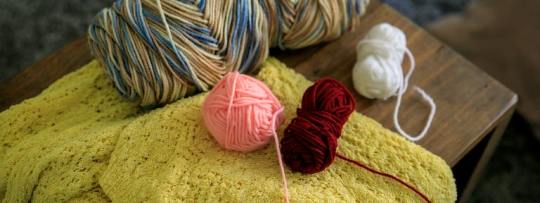
In conclusion, Gupta Fibres emerges as a frontrunner among organic cotton yarn manufacturers in India, offering a compelling combination of quality, sustainability, and innovation. With Gupta Fibres' organic cotton yarns, businesses can not only meet their textile needs but also contribute to a more sustainable and ethical supply chain.
#fiber weaving products#Fiber Weaving Products#Top Polyester Yarn Manufacturers in India#Cotton Wool Yarn#Organic Yarn Manufacturers India#Recycled Cotton Yarn#Recycled Knitting Yarn#Cotton Knit Yarn#Best Cotton Knitting Yarn#Dyed Yarn Manufacturers
0 notes
Text
Clothing has frequencies
Clothing, like everything in the universe, carries frequencies that affect your energy. Different materials, colors & production methods influence your mood & your well being.
High vibrational fabrics:
1. Silk: (10,000+ Hz)
Known for its luxurious feel, silk is considered one of the highest vibrational fabrics. It helps keep spiritual & emotional balance, while also being breathable and moisture absorbing.
2. Linen: (5,000 Hz)
Linen is known for its healing & grounding properties. It regulates energy flow and enhance your overall well being making it one of the most beneficial fabrics to wear.
3. Hemp: (5,000 Hz)
Hemp, a strong natural fiber, known for grounding and durability. It vibrates at a frequency similar to linen, enhancing stability & balance.
4. Wool: (5,000 Hz)
Wool is valued for its warmth and grounding energy. It has a protective frequency, which helps to maintain balance, particularly in colder climates.
5. Cotton: (100-500 Hz)
While not as high as silk or linen, cotton is still considered a high vibrational fabric. It promotes comfort and balance. Organic cotton is has an even higher frequency due to its natural cultivation.
6. Cashmere: (5,000 Hz)
Like wool, cashmere is known for warmth and luxury, offering a high vibration associated with comfort & peace.
Low vibrational fabrics:
1. Polyester: (15-70 Hz)
Polyester, being synthetic, is believed to have a very low vibrational frequency, which can block the natural flow of energy through the body. It causes emotional or physical discomfort over time and its production involves harsh chemicals contributing to low vibrational energy.
2. Acrylic: (15-70 Hz)
Another synthetic material that is associated with a low frequency that may lead to feelings of disconnection or imbalance.
3. Nylon: (30-70 Hz)
Often found in activewear, nylon has a low vibrational frequency and feels out of sync with the body’s natural energy flow.
4. Rayon: (30-70 Hz)
Rayon is also considered low vibrational because of the chemicals used in its production. It doesn’t offer the same energetic benefits as natural fibers.
How low vibrational clothing affects energy:
Blocks natural energy Flow: Synthetics like polyester can trap heat, moisture, and energy, blocking the natural flow through your body, which may lead to imbalance or discomfort.
Negative manufacturing practices: The production of low-vibrational fabrics often involves environmental harm and poor working conditions, which may carry negative energy that can affect the wearer.
Disrupts skin earth connection: Natural fibers like linen and cotton are thought to maintain a connection with the Earth’s energy, while synthetics can disrupt this connection, leading to a sense of disconnection.
Holds onto energies: Synthetic fabrics don’t breathe well and can hold onto negative energy from the environment or wearer, making you feel energetically weighed down over time.
Choosing high vibrational, natural fabrics can help improve your mood & energy flow, while low vibration synthetics will lead to you feeling disconnected and imbalanced.
341 notes
·
View notes
Text

All that glitters isn't always gold...
..sometimes it's just gold lame. Or Lurex. Or Mylar.
OK - so what the heck is lame? (pronounced 'lah-MAY') It was traditionally fabric made from metal fibers wrapped around other fibers, like silk or rayon. It was designed to create a metallic shine to clothing, so clothes were typically gold, silver, or copper colored. Besides style, lame was used in fencing uniforms which allowed the electrified sabers to register a 'hit' against an opponent.
Lurex is a close cousin to lame. In fact, you could claim they're in the same household since Lurex vaporized metal onto other fibers.
Today most manufacturers use Mylar, a polyester film that creates a metallic look, like with the one piece bathing suit I'm wearing. The trouble with Mylar is, after a while, it starts to peel off the backing fabric. Which makes clothing unappealing.
But, on the good side of things, a mylar swimsuit like this one is just fine for passing through airport metal detectors.
439 notes
·
View notes
Note
Why....why are the sweaters 3/4 sleeve??? Personally I would totally get a black sweater (or white tbh) but I can't vibe with a 3/4 sleeve (for a few reasons, mostly various sensory/attention problems) so i was wondering why that choice was made and whether there's any chance of a full length sleeve being made in addition or instead? But also I'm curious as to exactly what kind of fabric it is? Is it an anti-pill material? (Pilling is one of my fabric enemies)
so first off, this as is about the lace collar sweaters that will be hitting the store later this year. you can watch the full video here, but i’m including screenshots as well for those of y’all who don’t want to watch the video.
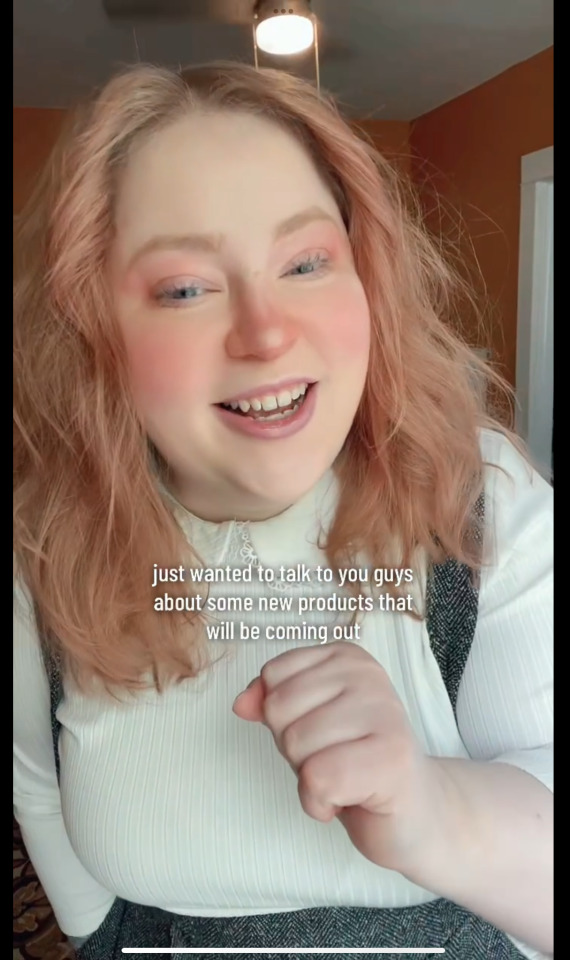
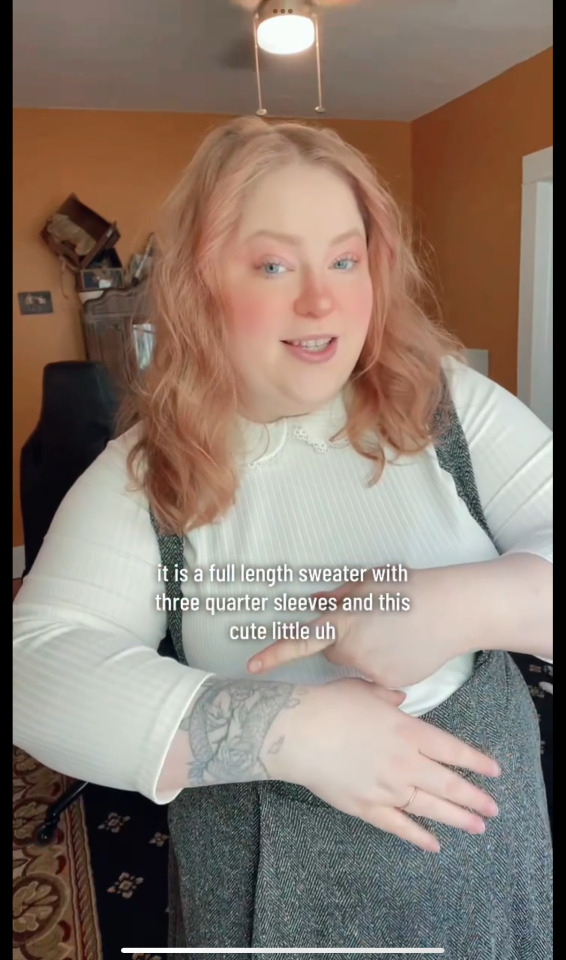
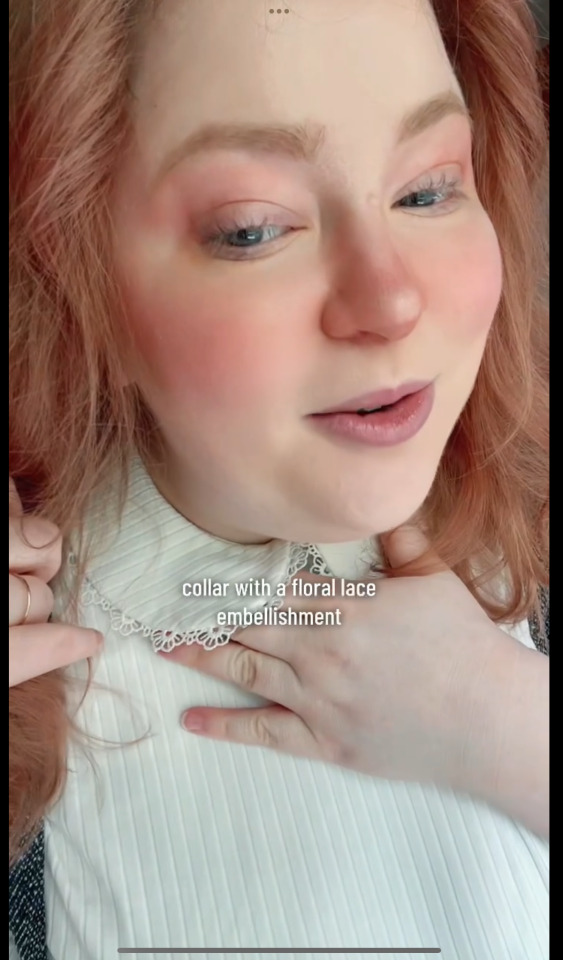
2nd, i get that everyone has personal preferences, but this was unnecessarily rude. you’re not going to like every decision we make, and that’s OK, but if you’re old enough to use a credit card to buy things online, you’re old enough to realize that product decisions you dislike were not made to personally gall you.
there were a few reasons we chose to do 3/4 sleeves, but the primary reason was that 3/4 sleeves work better for a variety of arm lengths. a 3/4 sleeve will look good whether someone’s arm is shorter or longer than average, whereas a full length sleeve can easily be too long or too short for the person wearing it. we also didn’t want to do short sleeves because at the time the only other shirt we had in production was the wrap top, which has short/cap sleeves.
we do have some full long sleeve shirts/sweaters in planning/in production that we have not shown off yet, but currently we do not have plans to make a long sleeve version of this particular sweater because we have no idea what sales will look like. if these sweaters sell well and there’s considerable customer demand, we’ll consider doing long sleeves. if these sweaters sell poorly they will not be returning to the store, period. we are a small business with limited funds and we cannot throw infinite money at the wall.
last, the fabric composition is 62% polyester, 33% viscose, 5% elastane. we tested a lot of fabrics for this sweater, and this was the only one that felt right. its appropriate thickness (not super thin, but not super thick, so that it can easily be layered under warmer garments or worn solo without causing you to overheat), the cute ribbing, and the texture/feeling (which don’t aggravate my textural sensitivities as an autistic person with very sensitive skin) were all just right.
we’ve also done a number of wash tests and did not encounter any issues with pilling. in general, if you take good care of our garments, that is not going to be an issue from our current manufacturer, who have demonstrated time and again that they prioritize quality labor and material that is made to last. the reason shein products fall apart isn’t because they’re made of polyester: it’s because the sewing is rushed and the fabric fibers are low quality and often have a looser knit or weave, which makes them more prone to damage/falling apart on a structural level.
as for pilling specifically, pilling is actually the fabric breaking. looser weaves/knits are more prone to breakage because they are more open and cheap fabrics are often made of looser weaves, which results in more pilling. but even a high quality material can pill under the right (or wrong) circumstances. when fiber is wet, similar to hair, it is more vulnerable to breakage, and washing machines with agitators (the big thing in the middle of some washers) are really really good at breaking your fibers, thus resulting in more pilling.
anyway tldr the sweaters shouldn’t have any pilling issues if you treat them right and full length sleeves are not likely to happen but are not totally impossible.
112 notes
·
View notes
Note
Hi Miss Sergle!!! I was wondering if you and maya would ever be open to make skirts with different materials? Like natural ones like cotton and linen. I personally avoid polyester when i can so it would be cool to see this option.
maya actually has been asked this question lots of times! she'd obviously like to make more natural fiber stuff if it was more feasible, but this is actually already in her faq.
"When it comes to custom printed skirts—unfortunately, no. I would love to be able to do that, but it is not feasible for our business.
Our skirts are printed using sublimation, which is a technique that requires synthetic material to work. In the case of our synthetic fiber skirts, this works just fine, but in the case of natural fiber cloth, the manufacturer has to use a polyester spray in order to bind the ink to the natural fiber, which sort of defeats the purpose of going natural to begin with.
Additionally, this is extremely expensive and is out of budget both for us as a company, and also for most of our customers.
We are working on a natural fiber option for our skirts, but the skirts will be dyed in a single color and not custom printed the way our synthetic fiber skirts are.
At the end of the day, we prioritize ethical labor and the certification of all our materials/processes as safe and non-hazardous over offering natural fiber." TL;DR: you can't have a natural fiber skirt with our art printed on it the way we do w synthetic. also, though people ask for these skirts, manufacturing them with ethical labor is very expensive, and folks often don't want to / aren't able to sink that kind of money for a skirt! people already ask why the current skirts are "so expensive", so a significantly more expensive version of a cotton skirt-- without custom printing on it-- is sort of a hard sell. P.S. I collaborate by making designs, but I don't make manufacturing decisions LOL I very much do not decide things like what fabrics to use.
77 notes
·
View notes
Text
Help me find my childhood favorite toy!
When I was about 2, I got this plush fish as a birthday present, and it quickly became my favorite toy. I'm still very attached to it, but I'm trying to possibly find a better condition version, just to have one. I'm assuming the toy was manufactured in the 90s, as I received it around 2003. Here's a picture of mine:

The information on the front side of the tag reads: "Distributed by Target corporation, Minneapolis MN 55403/ Item Number 73313 (I believe it says this; it may be an 8 instead of a 3)/ Made in China." The back side reads, "All new material/ conforms to toy safety regulations/ inner bagged PE pellets and polyester fiber/machine washable 0026/KCI PA. REG. NO. 253."
I was able to find this fish by Russ Berrie, which looks to be a similar shape, but is yellow, and a larger fish of the same shape in purple (also by Russ Berrie), which I also owned as a child. However, I believe my fish was originally pink, and its tag does not read Russ Berrie, so I'm not sure if it was the same company or not.
46 notes
·
View notes
Note
Hey I just saw your beeswax post and Kim fascinated. What does thread conditioning mean? (If you don’t mind explaining, I know I could Google it but I enjoy listening to people talk about stuff that they enjoy)
I do like talking about sewing! Though lately I've been using my hands for it so much that they're sore for typing sometimes. I need to strengthen my arms so the ligaments stop bitching. >.>
There's an exploration in the last reblog here. Basically: Conditioners are substances you put onto thread to make it stronger and more manageable.
Sometimes that's done in the manufacturing process, like for the creation of hand-quilting thread. It's already stiffer and smoother than usual cotton thread. But even then, once I've got it on the needle, I pull the thread over a lump of wax to add a thin coating to it. This is hugely to get the thread to forget the tight curls it has learned on the spool, which make it likely to snarl and be a pain.
There's also a whole thing where like... most modern thread isn't made for handsewing. A hand-sewn seam has one length of thread, two if it's doubled back. A sewing machine has two threads, twined together in a way that's really strong. (Technically it's "couched", not sewn, which takes people a bit of work to understand sometimes.) Overlock machines use three or four or five threads to make a seam. All of this leans the balance of demand in mass-produced thread towards stuff that is thin and lightweight, won't create a seam that is too bulky, but not particularly strong or smooth. If you buy cheap thread, that's what you'll probably get. If I want thread in a very specific colour, polyester thread gives me more choices, but is much less nice to sew with.
(There's also a whole thing about polyester, a petroleum byproduct, being way cheaper and easier to produce than natural fibers like cotton, silk, linen, or wool.)
I'm guessing professionally manufactured thread conditioners avoid some of the pitfalls of my beeswax, which responds to me coating the thread too thickly by shedding wax along the fabric as I sew, in a way that kind of looks like dandruff. But meh, I can live with that.
264 notes
·
View notes
Note
hi! if you're comfortable with sharing, i'm curious to know what shops that send lbs of fabric for the cost of shipping you were referring to in your contribution to the sustainable lifestyle post. or were these shops local to you? i'm getting into sewing and textiles to make clothes for myself and to give away to others and i feel this could be a very useful and affordable resource if you believe it possible to share!
A lot are local to me! Many small fabric shops will sell you their remnants in small quantities, sure, but many are also willing to simply sell you that scrap as a random assortment by weight! If they don't say so online, it never hurts to ask in person while you're checking their one-off remannt bins.
That said, more and more companies that have their own internal manufacture "remnant resale" process! So online shops like Quilt N Things, FabCycle, FabScrap, and MuuMuu Outlet will often carry "scrap by weight" purchase options in their shops! Your best bet is going to be finding where the local quilting community shops. These are people who are QUITE accustomed to purchasing fabric in wholesaler quantities with home-maker budgets, and they'll be able to direct you towards the best deals on this stuff.
I will say that it pays to learn how to identify fabrics when you do this, because random means random. I've received freight with scraps of brocade silk, embroidered and beaded fabric, raw muslin, pleather, oilcloth, wool, and so much more. You never know what might find its way into your box, and different fabrics do different things when incorporated into a garment. You can get more or less specific, but generally my biggest questions are always "is this an all-natural fabric or does it include polyester and other synthetic blends?" Because these I'm more likely to use outside as upholstry, garden fabric, or decor. That synthetic ingredient allows it to endure weather and moisture with less degredation, and makes it a worse option (for me due to medical issues) to use close to the skin, although it can be useful as an outer layer on raincoats and pants. Meanwhile, natural fibers like flax or cotton are extremely useful to me as lining fabric for garments, and fibers like wool are great for thermal regulation. My next question is usually about identifying the drape of a fabric, a mixture of understanding fiber content and weave and how that will look in the garment itself. Depending on what you're trying to do, you may have more questions you need to be able to answer, but it's all about your project needs.
Honestly, though, if you're an experimental sewer of any kind (e.g. a beginner still practicing stitching and construction techniques, or a tailor looking to drape a garment), these random assortments are a great way of always having enough fabric on hand that you don't mind sacrificing to the cause. I've found that one of the best ways to really get good at fiber craft is to lower the stakes of perceived failure. If I'm afraid to try something new, I try it on old moth eaten bedsheets I got for a dollar at the thrift shop, or on a 1000yd bundle of the cheapest imagineable yarn. Makes it easier to laugh off the cost of materials if it all goes lopsided. I'm able to get a lot more practice and test out a lot more approaches when it doesn't feel like an expensive waste of resources every time practice turns out....well. like practice!
Another really good option for you might be looking for free clothes being given away on Craigslist. These are most likely going to be mostly clothes not in shape for wearing, or they'd be sold or given to a thrift shop (although gems are always a possibility!). But given a good washing at the laundromat, they're a treasure trove of fabric scrap, and if there are any you like you can deconstruct them for patterning first before deconstructing for fabric purposes after! Voila, now you have 5-15lbs of fabric scrap and new patterns to boot, all for the cost of a laundromat and stock paper for pattern cutting.
Best of luck getting into your sewing! It's great fun, and when you start to get the hang of it, often you open up a whole world of possibilities you may bot otherwise have noticed!
7 notes
·
View notes
Text
The Leading Polyester Fiber Manufacturer in India
India is home to a booming textile industry, and at the heart of it lies the production of high-quality polyester fiber. As a polyester fiber manufacturer in India, we excel in delivering durable, versatile, and sustainable solutions for diverse industries. Let’s dive into why India’s polyester fiber industry is thriving and how we contribute to this dynamic sector.
Why Choose Polyester Fiber?
Polyester fiber stands out due to its remarkable properties such as:
Durability: Known for its high tensile strength and resistance to wear and tear.
Versatility: Ideal for textiles, automotive, and industrial applications.
Sustainability: Can be recycled, reducing environmental impact.
As a prominent manufacturer, we integrate advanced technologies to produce fibers that meet global standards, ensuring superior performance and eco-friendliness.
Our Specialization: Black Fiber Manufacturer in India
One of our unique offerings is high-quality black polyester fiber. As a leading black fiber manufacturer in India, we cater to various industries, including:
Textile and Garments: For high-fashion and utility wear.
Automotive: Providing durable fibers for interiors and insulation.
Home Furnishings: Enhancing aesthetics and functionality of upholstery.
Our black fibers are designed with precision, offering excellent color fastness and consistency, making them a preferred choice across sectors.
Commitment to Sustainability: rPET Recycling Company in India
In alignment with global sustainability goals, we have established ourselves as a trusted rPET recycling company in India. By recycling post-consumer PET bottles and converting them into premium polyester fibers, we:
Reduce Plastic Waste: Contributing significantly to minimizing landfill waste.
Promote Circular Economy: Ensuring materials are reused efficiently.
Support Eco-Friendly Initiatives: Reducing carbon footprint in the production process.
Our rPET fibers retain the same quality as virgin polyester, making them an excellent choice for environmentally conscious industries.
Driving Change in the Plastic Recycle Industry in India
The plastic recycle industry in India is pivotal in addressing environmental challenges. We take pride in being a key player, offering innovative recycling solutions that:
Enhance resource efficiency.
Reduce dependency on raw materials.
Encourage the adoption of recycled products in mainstream manufacturing.
Our advanced facilities are equipped to process large volumes of plastic waste, ensuring a steady supply of recycled materials for the production of polyester fibers.
Advantages of Choosing Us
Quality Assurance
We adhere to strict quality control processes to deliver fibers that meet international standards.
Sustainable Practices
Our operations are rooted in sustainable methodologies, prioritizing eco-friendly production techniques.
Customer-Centric Approach
We focus on understanding client requirements and delivering customized solutions that exceed expectations.
Conclusion
As a leading polyester fiber manufacturer in India, our commitment to quality, innovation, and sustainability sets us apart. From producing high-grade black fibers to championing the plastic recycle industry in India, we are dedicated to shaping a greener future.
Whether you’re looking for reliable black fiber solutions or exploring sustainable rPET products, we’re here to provide unparalleled expertise and value. Contact us today to learn more about our offerings and join us in making a positive environmental impact.
#Polyester fiber manufacturer in India#Black fiber manufacturer in India#rPET recycling company in India
0 notes
Text
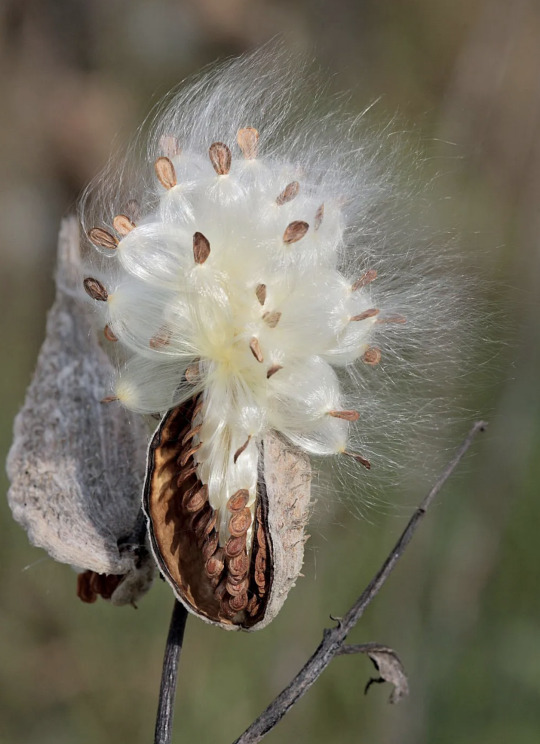
A couple of days ago, I was collecting seeds from the milkweed pods in our yard. Having not done this before, but being fully aware of the fuzzy stuff that flies out of the pods, I was battling fuzz (technically, "floss") as I was pulling off and storing the seeds. Then I got smart, and decided to cut a slit in the pods and then gently pull out the mass of floss and seeds, and then just pulling the seeds off and dropping then into the container. As I was doing that, I noticed how super soft the floss was as I pulled it fresh out of the pods, and wondered........do any clothing manufacturers use this stuff? Did a Google search, and learned....yep!
Excerpt from this story from Happy Eco News:
As consumers demand more eco-conscious apparel, brands are getting creative with natural materials that keep warmth in and environmental harm out. One unlikely hero emerging from prickly planted fields is the common milkweed—yes, literally plucked straight from the wild. While best known as the sole food source for iconic, struggling Monarch butterflies, milkweed’s hidden potential is nestled right inside its fluffy, silken floss. This fleecy fiber is an amazing natural insulator and is finding a new application in jackets, parkas, boots, and ski gloves for humans.
As outdoor apparel companies race to reduce environmental impacts, milkweed clothing insulation is proving a promising substitute for conventional insulation fillers—one aligned with cleaner agricultural systems. Its hollow-cored fluff offers an animal-friendly, biodegradable alternative to goose down. Unlike petroleum-based synthetics like polyester fibers, milkweed fills garments with a regeneratively sourced material that decomposes rather than lingering for centuries in landfills.
With conscious consumerism accelerating across industries, apparel buyers now consider impacts far beyond cost and quality when evaluating purchases. An unlikely hero from both suffering North American grasslands and climate crosshairs is rapidly gaining traction as a sustainable insulation material – common milkweed floss. Beyond keeping heat in and winter out with insulating performance rivaling goose down, milkweed rates exceptionally on multiple sustainability indicators resonant with eco-conscious consumers.
As a native perennial thriving on marginal lands, milkweed flourishing requires no irrigation, fertilizers or pesticides – regrowing reliably year after year. From a toxicity and allergen standpoint, milkweed avoids issues associated with many synthetic insulations or down. And supporting milkweed crop expansion helps reverse monarch butterfly declines blamed on agricultural habitat loss. For shoppers concerned over microplastics shedding into waterways from standard fleece, milkweed offers a soft, homegrown, biodegradable alternative. In short, milkweed checks all the boxes for socially mindful consumers seeking future-focused apparel that balances functionality with ethical, regenerative supply supporting threatened pollinators.
Signaling the momentum of milkweed clothing insulation, major brands like Patagonia are incorporating the fluff through novel partnerships with companies like Vegeto Textiles. Dedicated milkweed plantings bandwidth habitat zones while fibers make their way into garments. Other types of textile manufacturers are also jumping on board, some with announced plans to insulate blankets and quilts with milkweed.
Still, despite its promise, milkweed clothing insulation remains in its infancy. Technological barriers to processing millions of floss strands into a stable textile filling have just recently been worked out. Machinery and techniques to update this long-known application concept into a scalable commercial reality. Companies have worked for years honing best practices for taking raw milkweed fluff through cleaning, drying, and fiber alignment steps to transform fuzzy floss into outdoor-ready filling. Advancements in the coming decade will further improve integration potential across diverse textile products, opening doors for milkweed clothing insulation in everything from t-shirts to winter boots.
15 notes
·
View notes
Text
Sustainable Elegance: Exploring the Marvels of Recycled Cotton Yarn
Introduction: Step into the eco-friendly world of textile innovation with Recycled Cotton Yarn. In this article, we unravel the intricacies of recycled cotton yarn, exploring its significance, manufacturing process, and the environmental impact it brings to the world of crafting and textiles.
1. The Essence of Recycled Cotton Yarn: Delve into the concept of recycled cotton yarn and its role in sustainable crafting. Learn how recycled fibers contribute to reducing textile waste and the environmental benefits of choosing recycled over conventional yarn.
2. The Art of Upcycling: Explore the art of upcycling in textile manufacturing. Discover how discarded cotton textiles are transformed into recycled cotton yarn, giving new life to pre-existing materials and reducing the industry's carbon footprint.
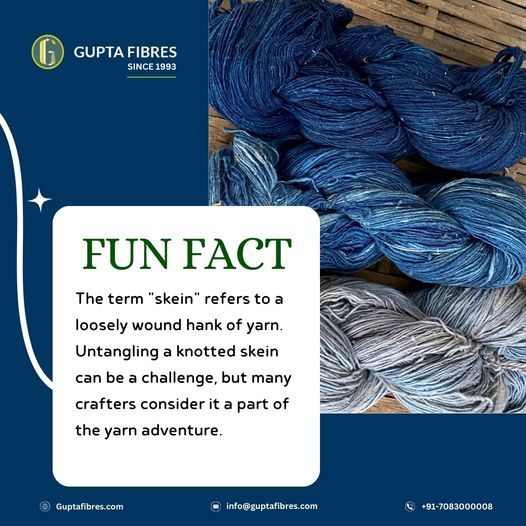
3. Environmental Impact and Sustainability: Examine the broader environmental impact of using recycled cotton yarn in crafting. Understand the significance of choosing sustainable materials, and how every creation made with recycled cotton yarn contributes to a more eco-conscious future.
4. Applications in Crafting and Textiles: Uncover the versatility of recycled cotton yarn in various crafting projects. From fashion to home décor, discover how this sustainable yarn lends itself to a wide array of applications, offering both style and environmental consciousness.
5. Gupta Fibres: Leading the Way in Recycled Cotton Yarn: Highlight Gupta Fibres as a trailblazer in the realm of recycled cotton yarn. Explore the company's commitment to sustainability, innovation, and excellence in manufacturing, making them a trusted name in providing high-quality recycled cotton yarn.
6. Collaborations and Sustainable Initiatives: Explore any notable collaborations or sustainable initiatives led by Gupta Fibres in the context of recycled cotton yarn. Highlight the company's efforts to promote awareness and adoption of eco-friendly materials in the textile industry.

7. Crafting with a Conscience: Encourage readers to make conscious choices in their crafting endeavors. Emphasize the joy of creating beautiful and sustainable pieces with recycled cotton yarn, knowing that each project contributes positively to the environment.
8. The Future of Crafting: Discuss the role of recycled cotton yarn in shaping the future of crafting and textiles. Explore how increasing awareness and demand for sustainable materials are transforming the industry and inspiring a new era of environmentally conscious creativity.
Conclusion: Conclude the article by celebrating the beauty and sustainability of recycled cotton yarn. Encourage readers to embrace this eco-friendly alternative in their crafting journeys, turning every project into a statement of style and environmental responsibility.
#recycled cotton yarn#fiber weaving products#cotton weaving yarn#best quality dyed yarns#cheapest place to buy yarn#best polyester yarn companies in india#weaving yarn#cotton fiber yarn#buy sustainable yarn online in india#buy weaving yarn online in india#Cotton Yarn Manufacturers in Panipat#Cotton Yarn Suppliers in India#Yarn Exporters in India#Yarn Dyed Fabric Manufacturers#Textile Yarn Manufacturers
0 notes
Note
Are different makers of inmate jumpsuits using different materials or are they all the same? If they're different what's your favorite for comfort and least favorite?
Yes.
First, there are makers like Bob Barker, Liberty (great prison uniform maker name!), Acme, Charm-Tex, Hard Time and others.
These companies make jumpsuits in a variety of colors and stripes. They use a polyester and cotton twill for durability.
Then there are the Federal and State Prison industries. 39 states and the Feds manufacture uniforms "in house" using inmate labor. Some rare uniforms are 100% cotton and made from fibers grown on the prison farms. Others use the highly durable poly/cotton combo



My favorite is a 100% cotton white jumpsuit from Texas. It's breathable and roomy and I could lounge around in one all day!




My least favorite is a Bob Barker velcro closure jumpsuit. The fabric is thick and scratchy and the velcro closure is a pain in the ass!
43 notes
·
View notes
Text
How Is Adidas AG Shaping the Shoe with Knitted Upper Market? Strategies, Innovations, and Developments

Introduction:
Adidas AG, a global leader in sportswear and footwear, is making substantial strides in the Shoe with Knitted Upper Market. Known for its commitment to innovation, sustainability, and performance, Adidas is leveraging its extensive expertise to revolutionize this sector.
This article explores how Adidas AG is influencing the market through strategic initiatives, emerging innovations, and recent developments in knitted upper footwear.
Download FREE Sample: https://www.nextmsc.com/shoe-with-knitted-upper-market/request-sample
1. Advanced Knitted Upper Technologies
A. Primeknit Technology
Adidas has pioneered the use of Primeknit technology in its knitted upper shoes, setting a new standard in the industry. Primeknit is a revolutionary knitting technique that integrates the upper material into a single, seamless piece.
Seamless Construction: Primeknit technology eliminates traditional stitching, resulting in a lightweight, flexible, and comfortable shoe. This seamless construction also enhances durability and reduces the potential for friction and irritation.
Custom Fit: The knit structure of Primeknit adapts to the wearer’s foot shape, providing a personalized fit and improved support.
Inquire before buying: https://www.nextmsc.com/shoe-with-knitted-upper-market/inquire-before-buying
B. Enhanced Performance Features
Adidas integrates advanced performance features into its knitted upper shoes to meet the demands of athletes and active consumers.
Breathability and Flexibility: The knitted upper design allows for superior breathability and flexibility, ensuring optimal comfort during high-intensity activities. The breathable fabric helps regulate temperature and wick moisture away from the foot.
Support and Cushioning: Adidas incorporates specialized cushioning systems and support structures into its knitted upper shoes, such as Boost and Bounce technologies, to enhance comfort and performance.
2. Commitment to Sustainability
A. Eco-Friendly Materials
Sustainability is a core focus for Adidas, and this commitment extends to its knitted upper shoes. The brand is actively working to reduce its environmental footprint by using eco-friendly materials and processes.
Parley for the Oceans: Adidas collaborates with Parley for the Oceans to create knitted upper shoes from recycled ocean plastic. This initiative helps address the global plastic waste crisis while promoting sustainability in footwear production.
Recycled and Organic Fibers: The brand is incorporating recycled polyester and organic cotton into its knitted uppers, reducing reliance on virgin materials and minimizing waste.
B. Sustainable Manufacturing Processes
Adidas is adopting sustainable manufacturing practices to further reduce its environmental impact.
Energy Efficiency: The company is investing in energy-efficient production technologies and renewable energy sources to minimize its carbon footprint.
Water Conservation: Adidas is implementing water-saving techniques in its manufacturing processes to reduce water consumption and pollution.
3. Innovations in Design and Aesthetics
A. Collaborations and Limited Editions
Adidas is known for its high-profile collaborations and limited-edition releases, which drive interest and excitement in the knitted upper shoe market.
Designer Partnerships: Collaborations with renowned designers and artists, such as Yohji Yamamoto and Stella McCartney, result in unique and highly sought-after knitted upper shoes that blend cutting-edge design with performance.
Seasonal Collections: Adidas regularly introduces seasonal collections featuring innovative designs and colorways, appealing to fashion-forward consumers.
B. Customization Options
Adidas offers customization options for its knitted upper shoes, allowing consumers to create personalized footwear that reflects their individual style.
Adidas Mi adidas: The Mi adidas platform enables customers to customize their knitted upper shoes with a variety of colors, patterns, and materials, providing a bespoke shopping experience.
3D-Printed Elements: The incorporation of 3D-printed elements in certain designs adds a layer of personalization and technological innovation to Adidas’ knitted upper shoes.
4. Expansion into New Markets
A. Global Reach
Adidas is expanding its presence in key international markets, driving growth for its knitted upper shoes.
Emerging Markets: The brand is targeting emerging markets in Asia-Pacific and Latin America, where increasing disposable income and growing interest in athletic and lifestyle footwear are fueling demand.
Retail Expansion: Adidas is opening new flagship stores and expanding its retail network globally to enhance accessibility and brand visibility.
B. E-Commerce and Digital Strategies
Adidas is leveraging e-commerce and digital platforms to reach a broader audience and drive sales.
Online Retail: The brand’s robust e-commerce platform allows consumers to shop for knitted upper shoes from anywhere in the world, providing a convenient and accessible shopping experience.
Digital Marketing: Adidas utilizes digital marketing strategies, including social media campaigns and influencer partnerships, to promote its knitted upper shoes and engage with customers.
5. Focus on Consumer Experience
A. Enhancing Comfort and Fit
Adidas prioritizes comfort and fit in its knitted upper shoes, ensuring that they meet the needs of active consumers.
Adaptive Fit Technologies: The brand is exploring adaptive fit technologies that adjust to the wearer’s foot shape and movement, providing a customized and supportive fit.
Ergonomic Design: Adidas incorporates ergonomic design principles into its knitted upper shoes to enhance comfort and reduce foot strain during prolonged wear.
B. Customer Feedback and Innovation
Adidas actively seeks customer feedback to drive innovation and improve its knitted upper shoes.
Consumer Insights: The brand collects and analyzes consumer feedback to understand preferences and identify areas for improvement in its footwear designs.
Iterative Design Process: Adidas uses insights from customer feedback to refine and enhance its knitted upper shoes, ensuring that they meet evolving consumer needs and expectations.
Conclusion
Adidas AG is at the forefront of innovation in the shoe with knitted upper market, leveraging advanced textile technologies, sustainable practices, and strategic market positioning to drive growth and enhance consumer experience. Through its Primeknit technology, commitment to sustainability, and focus on design and performance, Adidas is setting new standards for knitted upper shoes.
As the market continues to evolve, Adidas remains dedicated to pushing the boundaries of footwear design and technology, offering consumers cutting-edge products that combine style, functionality, and sustainability. With its global reach and commitment to innovation, Adidas is well-positioned to lead the way in the knitted upper shoe market and shape the future of footwear.
3 notes
·
View notes